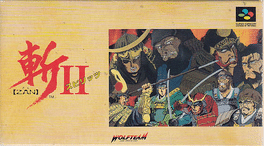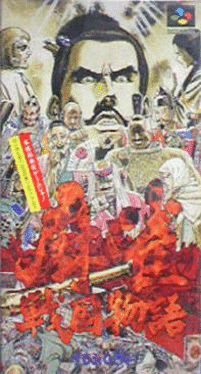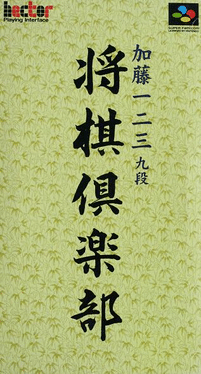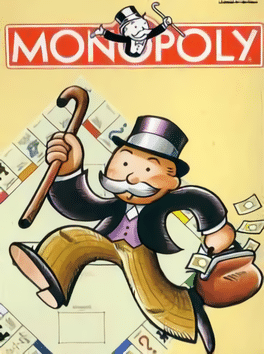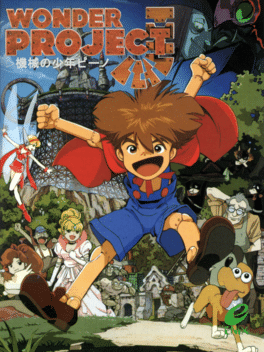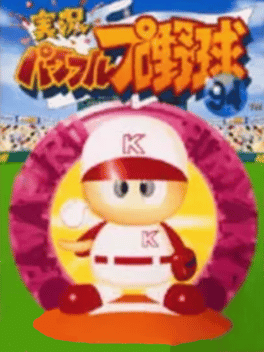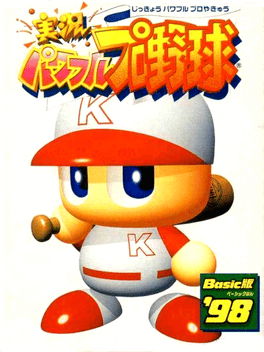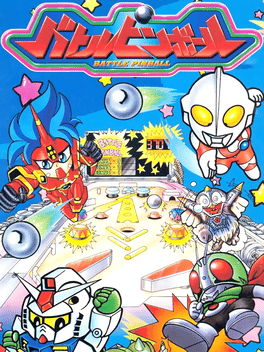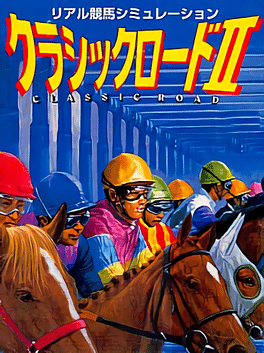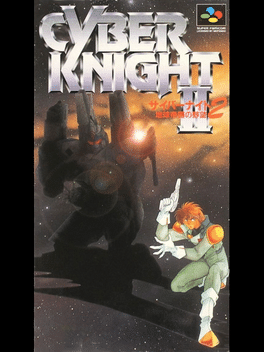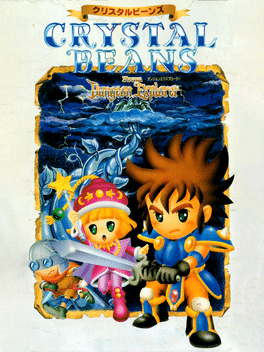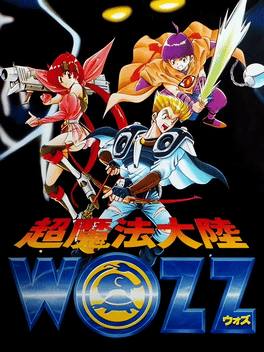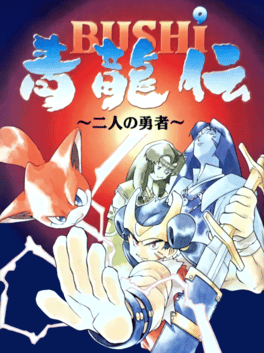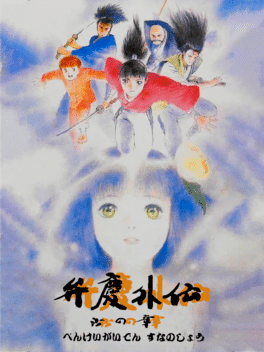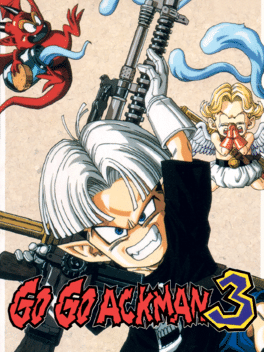Most Popular Super Famicom Games - Page 41
-
Zan II: Spirits
1992
Zan II: Spirits
1992
A Super Famicom strategy war sim from Wolf Team. It is set in the Sengoku era of Japanese history. Zan II: Spirits is the first Super Famicom game in Wolf Team's series of strategy sims set in historical Japan. It was eventually followed up with a sequel, Zan III: Spirits. As with its thematically-similar contemporaries, like Shingen the Ruler or Nobunaga's Ambition, Zan II puts the player in the geta of a Japanese feudal lord, or daimyo, with designs to wrest control over the rest of Japan from the other daimyos. The game is more focused on warfare than day-to-day resource management, with armies of samurai marching across the map to attack fortresses and pagodas that host enemy flags. -
Zan III Spirits
1994
Zan III Spirits
1994
A strategy sim from Wolf Team based on Japan's Sengoku era and the third in their Zan Spirits series. Zan III Spirits is the third game in Wolf Team's series of warring states era-set strategy war sims. While similar to Koei's Nobunaga's Ambition series in many ways, the Zan games are far more focused on warfare and logistics. Zan III is also the second in the Zan series to be released on the Super Famicom: most of the Zan series only appeared on Japanese home computers like the PC-9801 and FM Towns. The player is once again asked to lead the armies of their chosen daimyo (warlord) in an effort to conquer the rest of 16th century Japan. Zan III Spirits is an adaptation of Zan III: Tenun Ware ni Ari for the PC-9801, which was originally released in December 1993 four months prior. Zan III Spirits, like its SFC predecessor Zan II Spirits, was modified for its console release to make it work with the limitations/strengths of the system. -
Zengoku Juudan Ultra Shinri Game
1995
A spin-off of Visit's Shinri Game quiz series that frames its probing questions with a geographical TV quiz show. Zengoku Juudan Ultra Shinri Game ("National Longitudinal Slice Ultra Psychology Game", referring to how the in-game game show selects a region for a question by picking its longitude) is a quiz show for the Super Famicom that opts for questions of a more personality-test nature. With every Shinri Game, these questions are presented with a distinct framing device: in Zengoku Juudan's case, the game is presented as if it was a TV game show that pulls its questions from specific regions and prefectures of Japan. It follows three previous Shinri Games for the system, but isn't a true sequel - The Shinri Game IV, released on PlayStation in 1998, is the "true" fourth The Shinri Game. -
Mahjong Sengoku Monogatari
1994
Mahjong Sengoku Monogatari is a Miscellaneous game, developed by Khaos and published by Yojigen, which was released in Japan in 1994. -
Katou Hifumi Kudan Shogi Club
1997
Katou Hifumi Kudan Shogi Club is a Miscellaneous game, developed by Natsu System and published by Hect, which was released in Japan in 1997. -
Monopoly
1993
Monopoly
1993
Monopoly is a Miscellaneous game, developed and published by Tomy Corporation, which was released in Japan in 1993. -
Wonder Project J: Kikai no Shounen Pino
1995
In this simulation/role-playing game, you must use the robotic pixie Tinker to educate a robot boy named Pino. You can move Tinker around, examining objects and collecting them in an adventure-like fashion. Pino will automatically follow you to the direction you are facing, but will continue walking until you stop him. He will also pick objects and make his own "experiments" with them. Your goal is to train Pino in various disciplines. His stats can be raised in a RPG style: reading books increases his intelligence, throwing a ball increases his dexterity, and so on. By praising or scolding Pino you will gradually make him understand what should be done and what not. The game features animations by Anime studios Mint and Omnibus Promotions. With direction from Takashi Yoneda and late anime director Umanosuke Iida. -
Jikkyou Pawafuru Puroyakyu '94
1994
Jikkyou Powerful Pro Yakyuu '94 is a Sports game, published by Konami, which was released in Japan in 1994. -
Jikkyou Pawafuru Puroyakyu: Basic-ban '98
1998
Jikkyou Pawafuru Puroyakyu: Basic-ban '98 is a Sports game, developed by Diamond Head and published by Konami, which was released in Japan in 1998. -
Battle Pinball
1995
Battle Pinball
1995
Battle Pinball is a multi-table pinball game exclusive for the Super Famicom and part of Banpresto’s "Compati Hero Series" that brings together the licenses for Ultraman, Kamen Rider and Gundam. The game contains four tables, each themed to a different hero: Kamen Rider, who fights in dusty wastelands with a number of his recurring enemies; Ultraman, who fights in a city against various kaiju; Knight Gundam, who fights in space; and Banpresto’s own original character Fighter Roar, whose stage is set under the ocean. Each table also has three screens, each with their own set of paddles, and the player attempts to earn highscores from the various features on each table. -
Kunio-kun no Dodgeball Da yo Zenin Shuugou!: Tournament Special
1993
This version of Kunio-kun no Dodgeball Da yo Zenin Shuugou! was given in a very limited distribution on a gold cart. This version supports only 2 players. -
Classic Road II
1995
-
Bishoujo Senshi Sailor Moon Super S: Fuwa-fuwa Panic
1995
Bishoujo Senshi Sailor Moon Super S: Fuwa-fuwa Panic ("Pretty Soldier Sailor Moon Super S: Floating Panic") is a puzzle game licensed by Bandai that features the various Sailor Guardians, including the new "super" transformations of Usagi Tsukino (Sailor Moon) and Chibi-usa (Sailor Chibi Moon) that debuted in the "Super S" season, which was the name of the fourth season of the anime adaptation. -
Cyber Knight II
1994
Cyber Knight II
1994
This epic arcade adventure features a brave Knight on a quest to find the only thing that will release his beloved from a curse that has turned her into a dragon - the magical Grail. -
Crystal Beans: From Dungeon Explorer
1995
When the Demon Rain falls, The ground will turn to dirt, And the sea will lose its shine. - Legend, from the Grandol Royal Library - There once was a peaceful realm, known as Grandol... There was a time when demons had taken Grandol, and the world was on the edge of destruction. But with the power of the Miracle Gem, peace was restored. Afterwards, the powerful Miracle Gem was shattered and sealed away, since the peace of Grandol had been obtained. Then, on a certain day, one hundred years later... Suddenly, an enormous cloud took over the Grandol sky, and the Demon Rain started to fall. The wicked power of the Demon Rain changed the nature of Grandol. And when the Demon Rain stopped, a castle appeared atop the clouds... At this point, in the aftermath of the Demon Rain, the Demon Holes started showing up. Monsters began to appear from these. The Demon Rain seeped deep underground, where long ago the fragments of the Miracle Gem were sealed with fifteen demons. They reawakened. In the large Rulvesos Castle -
Chou-Mahou Tairiku Wozz
1995
A traditional Japanese-style RPG similar to Breath of Fire: turn-based battles are viewed from an isometric perspective. You control all three characters as a party, but in the beginning of the game you choose one of them as the main character, and therefore will see the game from his/her perspective. In case the characters split up, you'll be able to control only the one you chose. -
Bushi Seiryuu-den: Futari no Yuusha
1997
Bushi Seiryuu-den: Futari no Yuusha is a Role-Playing game, developed by Game Freak and published by T&E Soft, which was released in Japan in 1997. -
Bishoujo Senshi Sailor Moon: Another Story
1995
In the future Crystal Tokyo, a small band of discontent citizens have come together to form an rebel team of Senshi called the Oppositio Senshi, who feel that the Sailor Senshi and the Silver Crystal are the source of all of Earth's past battles. Together with a mysterious woman named Apsu, they desire to twist time and change the destiny of the Earth. In the present day, the Sailor Senshi are enjoying peace now that the Death Busters have been defeated. However, strange things begin happening in the city. Previously defeated Daimons, Droids and Youma appear throughout the city. A visit by Ryo Urawa reveals a cryptic statement that the past and future are being replaced. Rei sees strange apparitions in the fire, and then the four Inner Senshi, along with Chibiusa go missing. Sailor Moon meets up with Uranus, Neptune, and Saturn to go look for the missing Senshi. -
Benkei Gaiden: Suna no Shou
1992
Benkei Gaiden: Suna no Shou is a Japanese RPG set in a version of Ancient Japan filled with monsters and youkai. The game is a traditional top-down turn-based RPG in the vein of Dragon Quest. The player is able to choose between a male or a female avatar and name them, recruiting other characters as the game progresses. -
Go Go Ackman 3
1995
Go Go Ackman 3
1995
Go Go Ackman 3 is an Action game, developed by Aspect and published by Banpresto, which was released in Japan in 1995. It is the third and final Go Go Ackman game for the Super Famicom. This is the first game in which the series Nemesis, Tenshi, is playable. But due to the fact that Tenshi is an angel he will not collect the souls of the enemies. Go Go Ackman was created by famous mangaka Akira Toriyama, known for his work on Dragon Ball as well as games such as Chrono Trigger and Dragon Quest.
